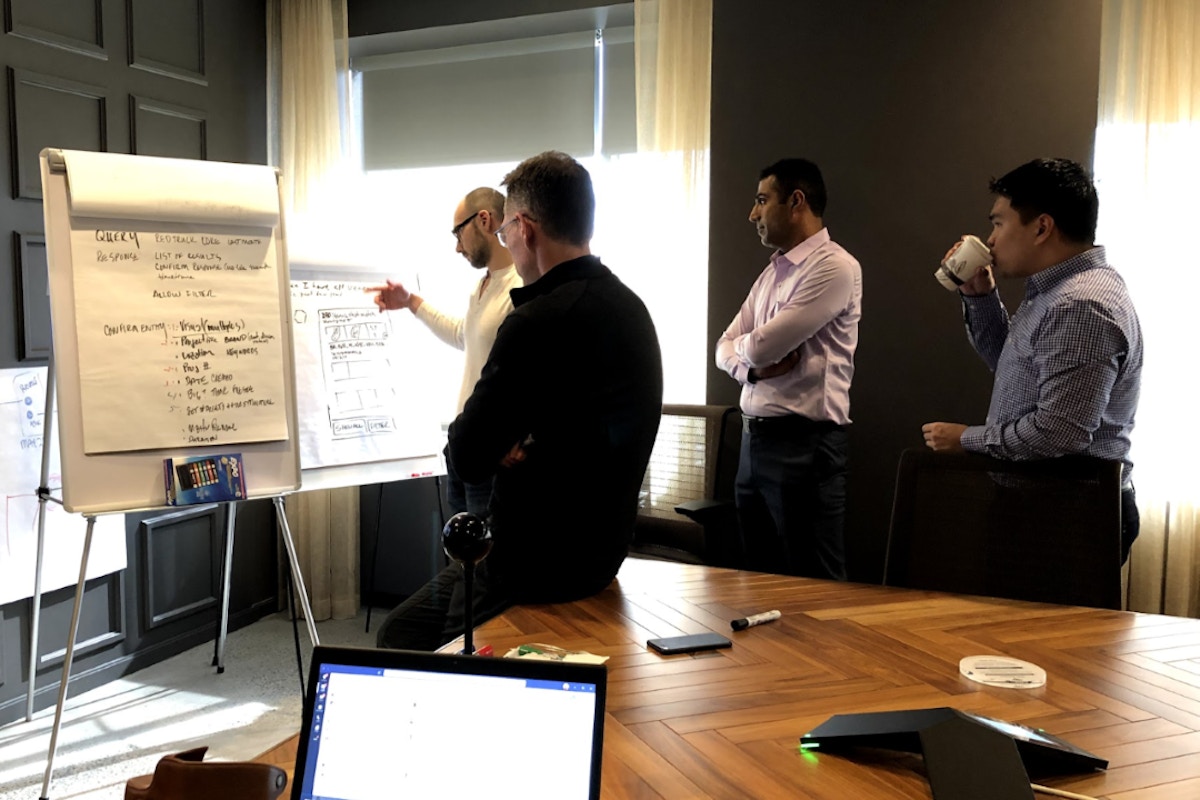Takeaways
- 1.9PB of unsearchable content scattered globally across Azure regions.
- Graph deployed Azure AI + natural language search to index the archive.
- Within 83 days: $2.2M saved, 100% adoption, and search time cut to 30s.
We transformed 60 million files into searchable intelligence, saving $2.2M annually. Built with Microsoft AI in 2019. Before ChatGPT existed. Before AI was cool.

As CTO of a global agency with 5,000 employees across 11 offices, he had a problem that was growing by 100,000 files a night. Every night.
Employees were spending hours searching through 1.9 petabytes of archived content. Not because they couldn't find files - but because they couldn't find the right ones. The product launch presentation? There were 47 versions across 12 folders.
Picture this: It's 4 pm in New York. A creative director needs the key shot from that Coca-Cola campaign. She knows it exists. She remembers approving it. Two hours later, she's reviewed 47 versions. None are right. The client meeting is tomorrow.
This wasn't an edge case. This was Tuesday.
"We had years of valuable content," Jason recalls. "But no one could find it when they needed it."
"We couldn't justify hot storage for 1.9 petabytes. So we used AI instead."
This wasn't just about search. It was about wasted time and effort, and recreating content that already existed - rather than being able to easily find and reuse it.
The numbers were brutal:
Traditional enterprise search was useless. File names meant nothing. Metadata was non-existent. The actual content - decades of work - was locked inside formats that search couldn't understand.
"We tried everything," Jason recalls. "Taxonomies. Naming conventions. Nothing scaled."
The system had to:
Most vendors were touting yet more search tools. Microsoft proposed Azure Knowledge Store and Artificial Intelligence. In 2019.

This was pre-ChatGPT. Pre-COVID. This was still 2019 when solving enterprise problems with AI required vision. For Jason's enterprise, that meant a big bet on the future.
"Most vendors showed us yet more search tools," Jason said. "Microsoft showed us how to leverage artificial intelligence."
Together, we designed:
But here's where it gets interesting. The UI? Microsoft Teams.
Not another dashboard to learn. Not another login to manage. We turned natural language into action. An employee could simply type: "Coca-Cola red truck sunset NYC"
Within seconds:
No training. No manual. Just... working.
The first question: "How do people actually search?" We mapped 20 years of content patterns. Not filenames - but how people remembered. "The ad that made people cry." "The Coca-Cola red truck." AI would need to understand context, not just metadata.
Same patterns, different accents. Everyone searched by memory and context. This wasn't a New York problem. It was universal.
This is where most AI projects fail - bridging the gap between proof-of-concept and production. We built for how people actually worked. No new workflows. No behavior change required. Everything through Teams.
The technology was straightforward. Getting through security reviews, budget approvals, and stakeholder buy-in? That's where projects typically stall. Microsoft's involvement opened doors. Live demonstrations converted skeptics into advocates.
No phases. No extended pilots. Full rollout across 11 offices from New York to London to Barcelona. Day one: everyone had access. The best adoption strategy? Build something people desperately need.
"Best use of Microsoft Teams I've seen."
Unstructured content scattered across 11 Azure global regions
Average search time reduced from hours to seconds
Saved in eliminated wrong-file retrievals
Creative directors stopped hoarding "just in case" folders. Why maintain duplicates when you can find anything in 30 seconds?
New employees discovered work from before they were hired. "I found content from years back that solved exactly the problem I was facing," one designer said. "It was like accessing the company's institutional memory."
Global teams became truly global. A brief in Sao Paulo could instantly access excellence from Tokyo. Not through complex systems or workflows. Just by asking: "Show me our best automotive work with urban settings."
"We didn't just solve search," Jason reflects. "We unlocked 20 years of creative intelligence. Suddenly, our history became our competitive advantage."
1. Your biggest constraint is your biggest opportunity
We couldn't afford $1.1M for hot storage. So we built a $160K AI system instead. Constraints force innovation. What "impossible" limitation might be hiding your breakthrough?
2. Adoption is architecture
The most sophisticated AI is worthless if people won't use it. We built inside Teams - where 5,000 employees already worked. Result: 100% adoption, zero training. Where does your workforce already operate?
3. Great AI is invisible AI
Success isn't when people discuss your AI capabilities. It's when they stop noticing the technology exists. When search becomes as natural as asking a colleague. When artificial intelligence becomes actual intelligence.
For Jason, it was creative assets.
For you, it might be:
We solved this in 83 days. In 2019. Before AI became a LinkedIn buzzword.
Today? Most "AI consultancies" are wrapping ChatGPT and calling it transformation. They're building chatbots while your knowledge remains trapped in storage.
The question isn't whether you need intelligence.
It's whether you'll build it before your competitors do.